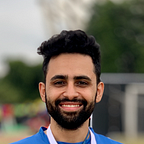Three things ethnography taught me about design
I had a chance to do my first ethnography study as a part of my master degree’s final project. The task at hand was to understand existing situation of incoherence of DOTS among Tuberculosis(TB) patients in the rural parts of Assam. For the research, I made daily, day-long visits to near by villages, and medical centres to talk to TB patients and their families. This excercise of making a conscious effort of reaching out to the users and living a day in their lives taught me a lot of (most importantly the following 3) things about design…
#1. Define the w’s sincerely
When I started out with my research, somewhere I was already inclined towards designing an ICT solution leveraging mobile phones. Because, why not? We all use mobile phones in our daily lives right? I was so happily married to this idea that for a long time, I kept ignoring the fact that almost all of the TB patients from the rural areas rarely knew how to use mobile phones if at all they had one. Mobile phones were solely used in case of emergencies. Clearly, I was living in a false world and I had not made a sincere effort to understand my user.
Define What? Why? Who? Where?, before you start finding the answers to your problem. As designers (creatives) we are often married to a solution/approach through our gut feeling. This makes us biased from the beginning and can make us feel helpless when we get stuck later on in the process. Don’t get into the process of solving a problem without understanding the problem space.
“A problem well-stated is a problem half-solved”. — Charles F. Kettering
Try this: Think about the problem space of any of the projects you are working on right now. Do you have the answers to the w’s? If not, have you made a sincere effort to find the answers?
#2. United we stand, divided we fall
Although I started out alone, to do the research successfully, I had to take help from people from different walks of life. As I progressed with my research, I formed my “A-team” of multi-disciplinary stakeholders, comprising of doctors, lab assistants, ASHA members, village heads and family members of patients who helped me understand the problem space from various (important) perspectives (which I would have certainly overlooked). Living the same story through different eyes was a game changer.
Likewise design can never be practiced alone. Yes, I agree that all of us like to work in our personal space and taking our own creative decisions, but a team of people complimenting each other’s strengths and bringing in new perspective will always prove to be beneficial for our work. Collaboration allows us to stretch out even further and explore new possibilities.
Try this: Reach out to one more stakeholder for your ongoing project and hear her story.
#3. Document, document and document!
During my first few days into ethnography, I rarely took notes. I always felt that I would somehow, magically remember each and every idea that came across my mind. As the days passed, the amount of information started to increase exponentially and I started to forget and miss most of the insights I had during the day. To avoid this, I started taking quick notes (sketches/discrete sentences) regularly and never lost out on any observation again. I made a practice of taking 5–10 mins off every hour to pause and note down my observations.
One of the things we designers often overlook is documentation/note making. We fail to realise the importance of documenting our thoughts and “inner voices”. While we are “in the moment” we get bombarded with short lived ideas and thoughts which fade away quickly if not documented. Notes help us to document all the short lived ideas and process all the information. After all they are our bread and butter! Notes need not be verbose all the time. Quick, minimal sketches conveying a point can be equally efficient. It really is a personal choice.
Try this: Carry a small notebook for your next meeting and try to document things that pass by your mind. Scan/revisit these notes by end of the day for insights.
P.S: I would like to thank my professor Keyur Sorathia from Department of Design, IIT Guwahati for helping me out with this study and providing me with tools of the trade.
